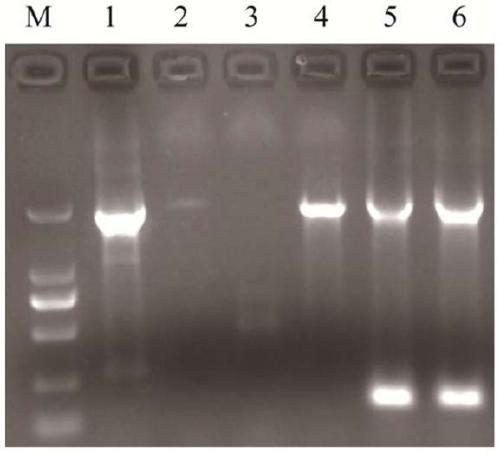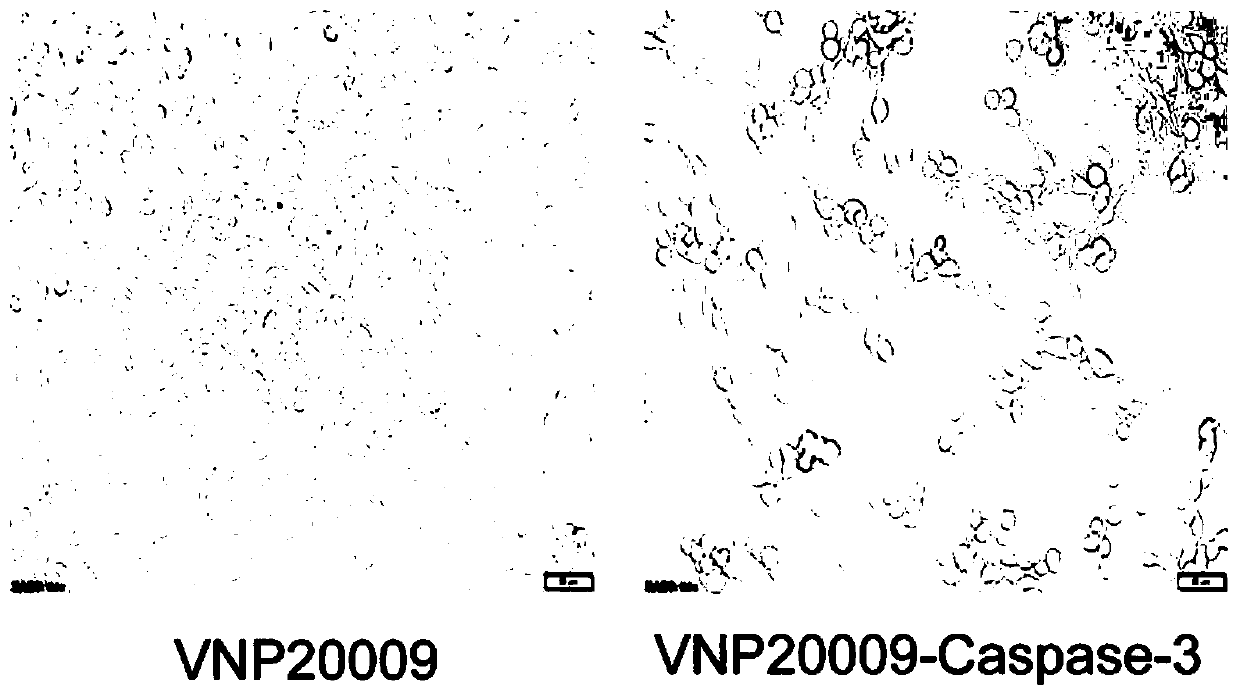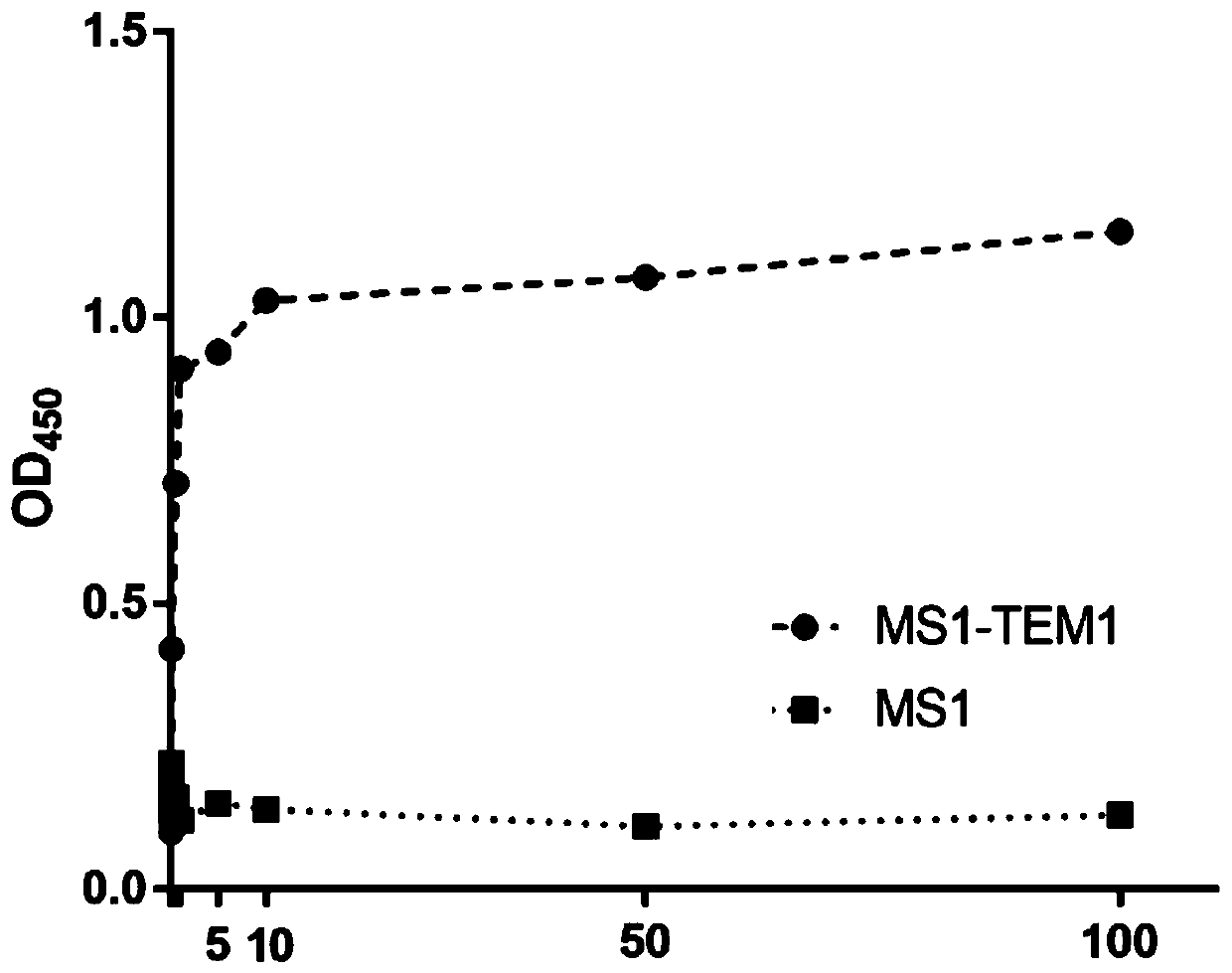Recombinant Escherichia coli for expressing Caspase-3 recombinant scFv78 and functional verification method of recombinant Escherichia coli
A technology for recombining Escherichia coli and scfv78, applied in the field of molecular biology, to achieve great application value, clear genome and genetic background, and easy transformation
- Summary
- Abstract
- Description
- Claims
- Application Information
AI Technical Summary
Problems solved by technology
Method used
Image
Examples
Embodiment 1
[0035] 1. Using pET302-78-Caspase-3 as a template and using the sequences of SEQ ID No.3 and SEQ ID No.4 as primers, obtain the 78-Caspase-3 fragment shown in SEQ ID No.1 by PCR amplification.
[0036] Among them, 78 is a single-chain antibody that specifically recognizes TEM1 that has been screened by our laboratory in the early stage, and is named 78; Caspase3 is an apoptosis-inducing factor. The gene sequence of the Caspase3 fragment was obtained through GeneBank, and then handed over to the company (Nanjing GenScript ) to carry out chemical synthesis of the whole sequence to obtain pUC57-78-Csapase3 recombinant plasmid or pET302-78-Caspase-3 recombinant plasmid. Further, pET302-78-Caspase-3 or pUC57-78-Csapase3 was used as a template, and the sequences of SEQ ID No.3 and SEQ ID No.4 were used as primers to obtain the 78-Caspase- 3 fragments.
[0037] 2. The obtained 78-Caspase-3 fragment and plasmid pET302 were double digested with Xho I and AvrII. After purification, the...
Embodiment 2
[0042] Recombinant Escherichia coli Nissle 1917 expressing Caspase-3 recombinant scFv78, which was constructed by the following method:
[0043] 1) Ligate the gene fragment 78-Caspase-3 encoding the human toxin Caspase-3 recombinant single-chain antibody scFv78 into the pET302 plasmid by enzyme digestion and ligation to obtain the pET302-78-Caspase-3 recombinant plasmid;
[0044] 2) Transform the pET302-78-Caspase-3 recombinant plasmid into Escherichia coli Nissle 1917 to obtain recombinant E. coli Nissle1917-pET302-78-Caspase-3, which is the recombinant scFv78 expressing Caspase-3 Recombinant Escherichia coli Nissle 1917.
[0045] Wherein, the gene fragment 78-Caspase-3 encoding the recombinant single-chain antibody scFv78 of human toxin Caspase-3 in step 1) is a DNA fragment whose nucleotide sequence is shown in SEQ ID No.1.
[0046] The coding gene fragment 78-Caspase-3 of human toxin Caspase-3 recombinant single-chain antibody scFv78 in step 1) uses the DNA fragments with...
PUM
 Login to View More
Login to View More Abstract
Description
Claims
Application Information
 Login to View More
Login to View More - R&D
- Intellectual Property
- Life Sciences
- Materials
- Tech Scout
- Unparalleled Data Quality
- Higher Quality Content
- 60% Fewer Hallucinations
Browse by: Latest US Patents, China's latest patents, Technical Efficacy Thesaurus, Application Domain, Technology Topic, Popular Technical Reports.
© 2025 PatSnap. All rights reserved.Legal|Privacy policy|Modern Slavery Act Transparency Statement|Sitemap|About US| Contact US: help@patsnap.com



